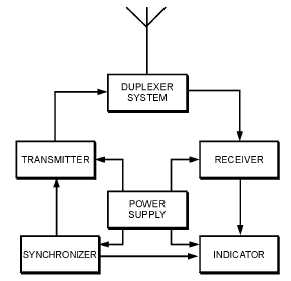1-43
SCANNING is the systematic movement of a radar beam while searching for or tracking a target.
STATIONARY-LOBE SCANNING is the simplest type of scanning and is usually used in 2D
search radar. Monopulse scanning, used in fire-control radars, employs four signal quantities to accurately
track moving targets. The two basic methods of scanning are MECHANICAL and ELECTRONIC.
Radar systems are often divided into operational categories based on energy transmission methods—
continuous wave (cw), frequency modulation (fm), and pulse modulation (pm).
The CONTINUOUS WAVE (cw) method transmits a constant frequency and detects moving
targets by detecting the change in frequency caused by electromagnetic energy reflecting from a moving
target. This change in frequency is called the DOPPLER SHIFT or DOPPLER EFFECT.
In the FREQUENCY MODULATION (fm) method, a signal that constantly changes in frequency
around a fixed reference is used to detect stationary objects.
The PULSE-MODULATION (pm) METHOD uses short pulses of energy and relatively long
listening times to accurately determine target range. Since this method does not depend on signal
frequency or target motion, it has an advantage over cw and fm methods. It is the most common type of
radar.
Radar systems are also classified by function. SEARCH RADAR continuously scans a volume of
space and provides initial detection of all targets. TRACK RADAR provides continuous range, bearing,
and elevation data on one or more specific targets. Most radar systems are variations of these two types.



